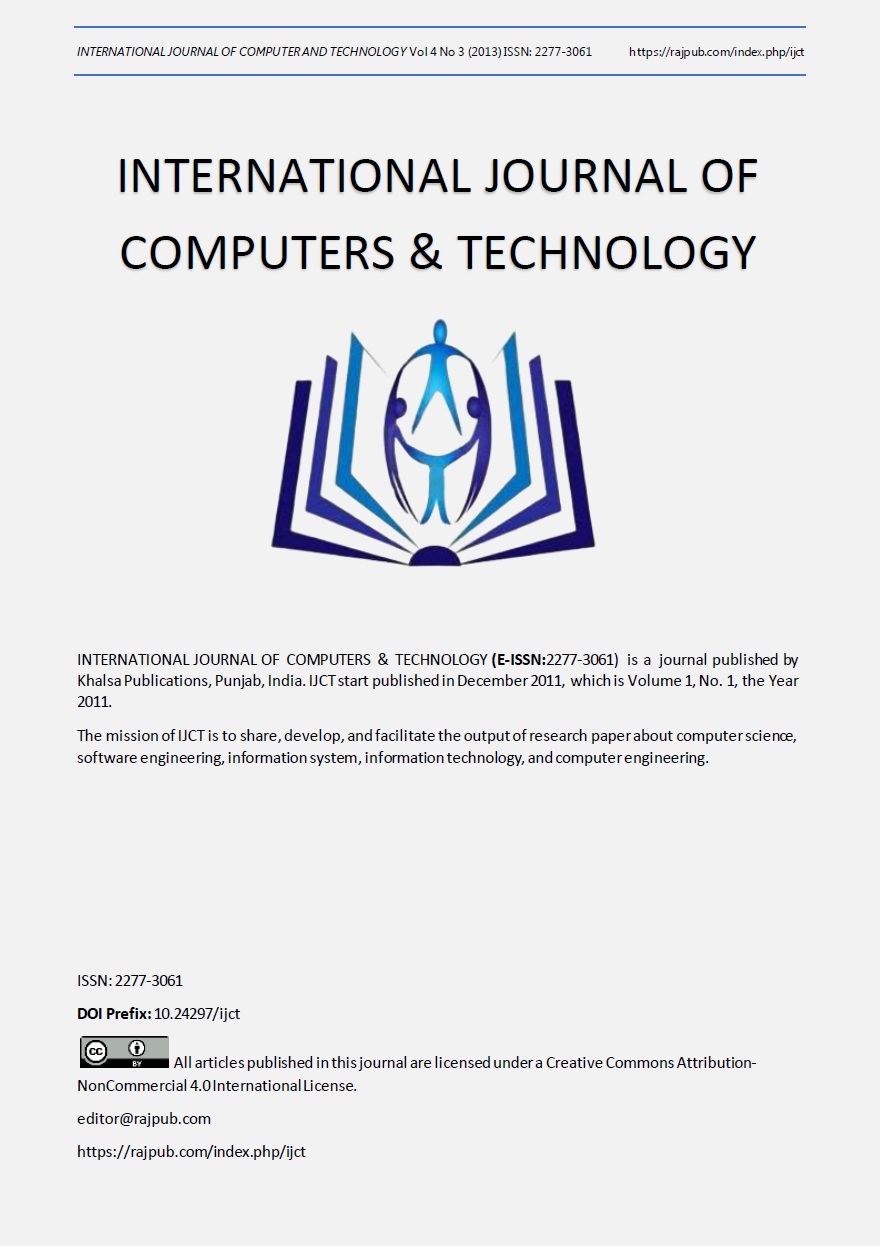Steganography: Securing Message in wireless network
DOI:
https://doi.org/10.24297/ijct.v4i3.4200Keywords:
Embedding, Steganography, Message hiding, LSB replacement, Stego, Capacity.Abstract
Steganography is the process of hiding a secret message with in a cover medium. However eavesdropper may guess the embedding algorithm like least significant bit (LSB) replacement of Chan et al, 2004; Wang et al, 2001; Wu et al, 2005, LSB matching of Mielikainen, 2006, addition and/or subtraction of Andead wastfield, 2001; F. Huang et al in 2011, Exploiting Modification Direction by Zhang and Wang, 2006, Binary Space Partition by Tsai and Wang, 2007, modulus function of Chin et al, 2011 and thus can apply the respective extraction method to detect the secret message. So challenges lies in the methodologies of embedding message. Capacity, security and robustness are the services to be demanded by users. Again the true-positive rate of secret message detection by eavesdropper should be lessened by applying firm technique. Thirdly operating domain should be less sensitive to the noise, margin level of losses or alteration of data while communicating through unguided medium like wireless network, sensor network and cellular network. This paper will briefly discuss the steganographic methods and their experimental results explained in the survey paper of Niels Provos and Peter Honeyman to hide and seek message. Finally the proposed results and the directions for future works are addressed.









